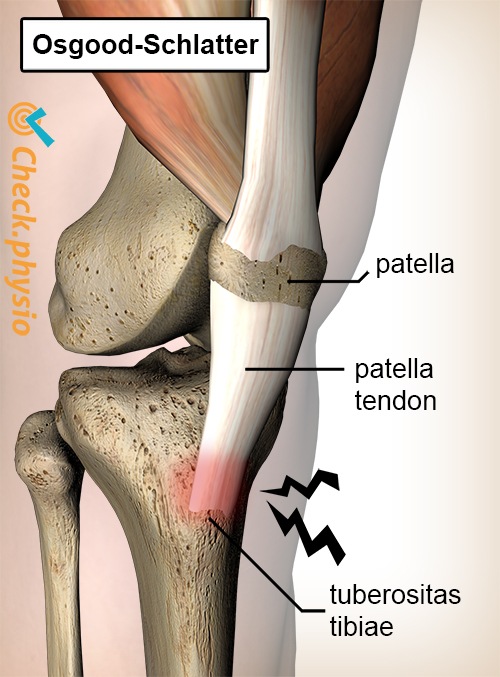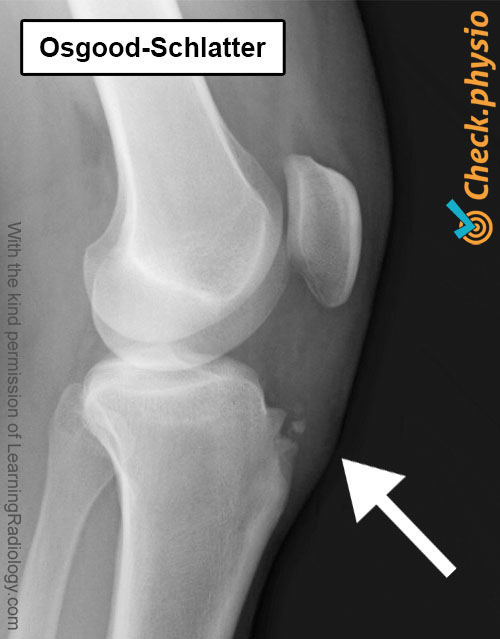- Conditions
- Osgood-Schlatter
Osgood-Schlatter Osgood-Schlatter Disease / OSD / apophysitis of the tibial tubercle
Introduction
Osgood-Schlatter disease involves uncontrolled growth of the tibial tuberosity. This is the bump at the front of the shin bone, just below the knee. You could think of Osgood-Schlatter disease as an over-exertion injury of the knee during growth.
Osgood-Schlatter disease is particularly common in boys between the ages of 10 and 16 years, when they are experiencing a growth spurt and playing sports. It is slightly less common in girls and presents between the ages of 8 to 12 years.

Description of the condition
The attachment of the patellar tendon to the lower leg becomes irritated and inflamed. This causes pain at the attachment site of the patellar tendon to the tibial tuberosity. This is the hard bump located directly below the knee on the front of the leg. After several months, this is often accompanied by the formation of excess bone tissue at this site.
Cause and origin
The pain symptoms can occur suddenly or develop gradually and are often present to varying degrees. The pain is caused by continuous tension from the patellar tendon on the developing tibial tuberosity.
Signs & symptoms
A visible bump develops below the knee, which is sensitive and warm to the touch. Symptoms occur mainly during and after sports that involve a lot of running, jumping or kneeling. This exerts large forces on the patellar tendon. The bump is painful when you press it. Fluid accumulation can sometimes occur.
Diagnosis
The diagnosis is made by the orthopaedic surgeon or the physiotherapist. X-ray examination can support the diagnosis, but does not provide 100 % certainty.
Treatment and recovery
Osgood-Schlatter disease is difficult to treat. The symptoms are associated with growth and will - in many cases - only disappear altogether once the child has stopped growing.
Exercises
Follow the exercise programme here with exercises for Osgood-Schlatter.
More info
You can check your symptoms using the online physiotherapy check or make an appointment with a physiotherapy practice in your area.
References
Verhaar, J.A.N. & Linden, A.J. van der (2005) Orthopedie Houten: Bohn Stafleu van Loghum.

